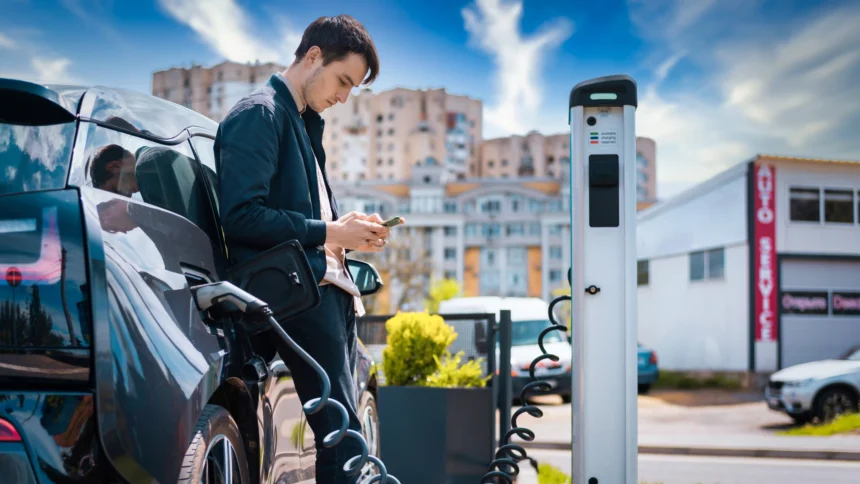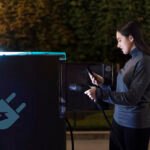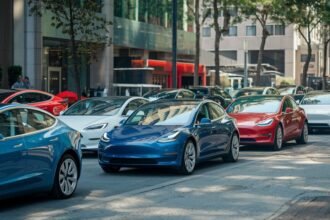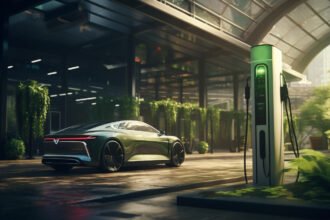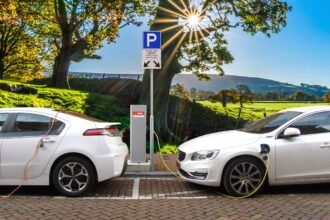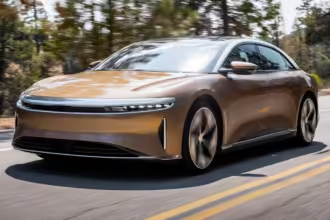Electric vehicles (EVs) are becoming more popular in the USA, thanks to their eco-friendly benefits and long-term cost savings. One of the most convenient aspects of owning an EV is the ability to charge it at home. No more trips to the gas station! But how exactly do you charge your EV at home? This guide will walk you through the process, providing everything you need to know to make home charging easy and efficient.
Why Charge Your EV at Home?
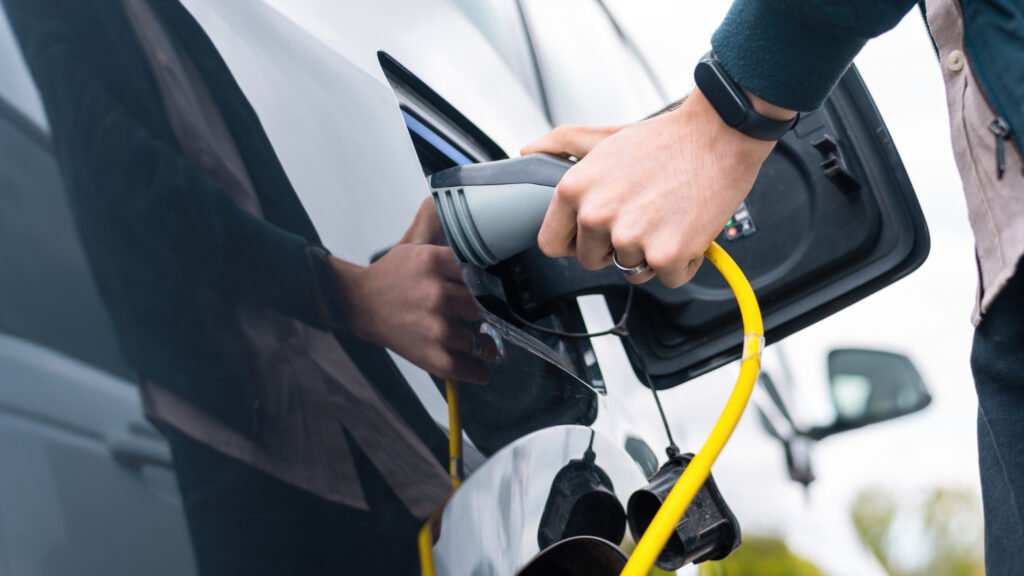
Home charging offers several advantages over public charging stations:
- Convenience: You can charge overnight while you sleep.
- Cost savings: Home electricity is generally cheaper than public charging stations.
- Efficiency: You’ll always start your day with a fully charged car.
However, to get the best results, you need to understand how to set up a proper home charging system. Let’s get started!
Step 1: Choose the Right Charging Level

EV home charging typically comes in two levels: Level 1 and Level 2.
Level 1 Charging
- Voltage: 120V (standard household outlet)
- Charging time: Adds around 3-5 miles of range per hour.
- Best for: Plug-in hybrids or EVs that don’t need to travel long distances daily.
Level 1 charging is the simplest option, as it only requires a standard outlet. However, it’s relatively slow, so it’s not ideal for fully electric vehicles with larger batteries.
Level 2 Charging
- Voltage: 240V (like your dryer or oven outlet)
- Charging time: Adds 20-30 miles of range per hour.
- Best for: Fully electric vehicles or EVs that are driven frequently.
Level 2 charging is faster and more efficient but requires a dedicated 240V outlet and potentially some electrical upgrades in your home.
| Charging Type | Voltage | Charging Speed | Best for |
|---|---|---|---|
| Level 1 | 120V | 3-5 miles per hour | Plug-in hybrids, occasional driving |
| Level 2 | 240V | 20-30 miles per hour | Fully electric vehicles, frequent driving |
Step 2: Install a Level 2 Charger (Optional but Recommended)
If you’re serious about EV ownership and want faster charging, installing a Level 2 charger is highly recommended. Here’s how to go about it:
Find a Certified Electrician
Installing a Level 2 charger requires modifying your home’s electrical system. This is not a DIY project unless you have professional experience. Hire a certified electrician to ensure everything is up to code and safe.
Choose the Right Charger
When selecting a Level 2 charger, consider the following:
- Amperage: Most home chargers offer between 16 to 50 amps. Higher amps mean faster charging.
- Smart features: Some chargers come with apps that allow you to monitor charging, schedule it during off-peak hours, and even control it remotely.
- Brand and Compatibility: Make sure the charger is compatible with your EV. Most chargers are universal, but it’s always a good idea to check.
Cost of Installation
The cost of a Level 2 charger and installation can vary depending on your location and the complexity of the work required. On average, expect to spend between $500 and $1,500 for the charger itself and another $500 to $1,200 for installation.
Step 3: Plug in and Charge!
Once your charging station is installed, it’s time to plug in your EV. Here’s how:
- Park your EV in your garage or driveway, close to the charging outlet.
- Ensure the charging cable is long enough to reach the EV’s charging port.
- Plug the connector into your vehicle.
- Start the charging process. Depending on your charger, this may be automatic, or you may need to press a button or tap on a mobile app.
Once connected, your EV will begin charging. Most EVs will show a charging indicator on the dashboard or through a smartphone app, so you know it’s working.
Step 4: Monitor Your Charging
While your EV charges, it’s essential to keep an eye on its progress, especially if this is one of your first home charging experiences.
Charging Time
- Level 1 charging: Can take up to 20+ hours for a full charge, depending on the battery size.
- Level 2 charging: A full charge can be completed in 4-8 hours for most EVs.
Charging Status
Modern EVs come with apps that allow you to monitor the charging status remotely. This is especially useful if you’re charging overnight or want to know when your car is ready.
Off-Peak Charging
If you live in an area where electricity rates vary throughout the day, consider charging your EV during off-peak hours. Many electric companies offer lower rates at night, helping you save money.
Step 5: Maintain Your EV Charger
Just like any other appliance, your home EV charger needs maintenance to ensure longevity and efficiency.
Tips for Maintaining Your EV Charger:
- Regular Inspection: Check the charger and cords for any wear or damage.
- Clean Connections: Wipe down the charging port and connector to prevent dust and debris from interfering with the connection.
- Software Updates: If your charger has smart features, keep its software up to date.
FAQs About Charging Your EV at Home
1. Can I charge my EV using a regular outlet?
Yes, Level 1 charging uses a standard household outlet, but it’s much slower than Level 2 charging.
2. How much does it cost to charge an EV at home?
On average, it costs about $0.10 to $0.15 per kilowatt-hour (kWh). For a 60 kWh battery, this translates to $6-$9 per full charge.
3. How long does it take to charge an EV at home?
With Level 1, it can take 20+ hours for a full charge. Level 2 reduces this to 4-8 hours depending on your vehicle and charger capacity.
4. Is it safe to charge an EV at home?
Yes, it’s safe if installed correctly by a certified electrician. Always follow manufacturer guidelines for operation.
5. Do I need a special outlet for a Level 2 charger?
Yes, a Level 2 charger requires a 240V outlet, which is typically used for larger appliances like dryers.
Conclusion
Charging your EV at home is convenient and cost-effective, especially when you follow the right steps to set up your charging system. From selecting the proper charging level to installing a Level 2 charger, you can enjoy a fully charged car every morning. By monitoring your charging habits and maintaining your equipment, you’ll ensure a seamless and efficient charging experience for years to come.
Start charging smarter today and enjoy the benefits of electric vehicle ownership!


